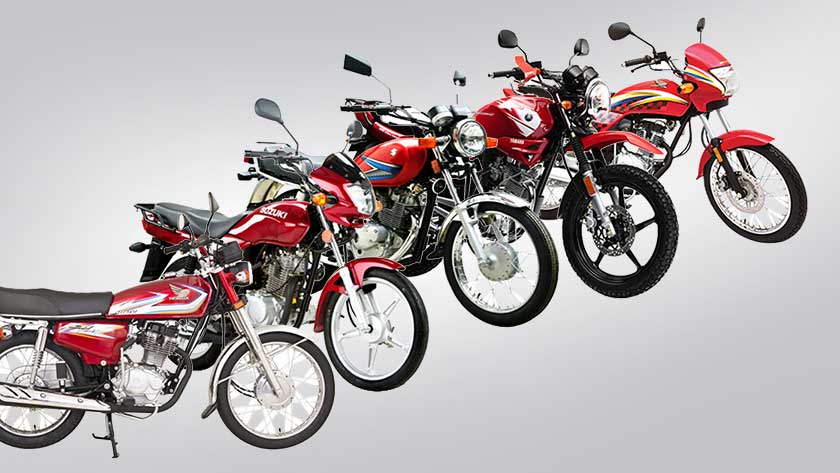Technology has evolved many folds in the past few decades. The global automobile industry is so different and has always strived to outperform its milestones concerning improved and reliable products. But things are quite the opposite when it comes to Pakistan’s automotive industry in general and the motorcycle industry in particular.
For Sale on Pakwheels: Motorcycle
Pakistan is the fifth most populated country and one of the most lucrative motorcycle market in the world. A major chunk of the population represents an ever growing middle-class, and a high percentage of youth with limited financial resources; this makes motorcycles the prime, efficient and cost effective means of personal transportation for a Pakistani.
The local motorcycle industry comprises of two major Japanese players which include (Atlas)-Honda, (Pak)-Suzuki, Yamaha-motors and tens of local manufacturers/assemblers which produce more than 2 million units annually. The market mainly revolves around two engine displacements 70cc and 125cc. The 70cc engine is more or less obsolete from the world, but in Pakistan, it is the most competitive market segment followed by 125cc engine category. As per the latest reports from Pakistan Automotive Manufacturers Association (PAMA) about 1 million units have been produced over the period from July 2016 to March 2017 out of which about 51% of the motorcycles have been produced by the Japanese giant Honda Atlas. Their CD70 and CG125 are the most renowned machines that company has to offer since it started its business way back in 1960’.
In spite of such overwhelming numbers, none of the manufacturers are offering any locally manufactured/assembled new and innovative products. The decades-old designed 70cc and 125cc still sells like hot cakes. However, we cannot put the sole responsibility of this lack of innovation on the manufacturer alone. Instead, the consumer is equally to be blamed upon. What our market needs is to change the thinking of our customers who have not come out of the brrrrrrrrrrr of a CG125 (Honda). The prime example is Yamaha motors, relatively a new player who came back in 2013-14 and offered some improved, modern and pleasent looking bikes (YBR125 and YBR125G) in the Pakistani market; but the response was somewhat underpowered and could not break the decades-old monopoly of a CG125. However, it fairly dented Pak Suzuki’s GS150, which has a bigger engine displacement in roughly the same price tag. Keeping the customer preferences in mind, Yamaha also fell prey to the irony of our local market and recently introduced somewhat a retro design based YB125Z without any disc brakes and alloy rims that are considered as necessary in any other country across the globe. This is a clear indication that for the next couple of years, Yamaha Pakistan will be focusing on retro styled products instead of introducing their latest models like they are doing in other markets around the world.
People often compare Yamaha Pakistan or Honda Atlas with their Indian counterparts, which is unfair on so many levels. Yamaha India was founded way back in 2001 and Indian market has always had different dynamics then Pakistani auto market, coupled with the market size and product consumption of Indian market, which is 6-7 times larger than Pakistan. Yamaha India is offering more than 15 products with latest designs and technology features in affordable price tags. The local manufacturers in India like Bajaj have changed the way consumers think of a bike in India by moving from conventional retro motorcycles to modern ones. Hence, companies and manufacturers in Pakistan need to modify the mindset of consumers instead of continuing with their short-sighted policies.
Moving on to the positive side of the picture, some local assemblers like Superpower and Unique have collaborated with other bike manufacturers in China and introduced some new motorcycles in the 150cc and 200cc category with better options, looks, and design features. But still, the local manufacturers are not producing these units in-house rather importing them as completely built units from China. The downside of importing a finished unit is that the price of these motorcycles tends to get a lot higher due to import duties and taxes as compared to locally manufactured motorcycles of the same quality. To further my point there is a general trend associated with these imported bikes known as the ‘discontinuation phase,’ which enunciates that these bikes are imported in a certain quantity, and after selling them the local assemblers just discontinue their import, which creates a weak customer base, pathetic resale value and woeful after sales services. Last but not the least, there is another drawback, which is the outflow of dollars from Pakistan.
This dilemma can be addressed if the government implements auto-policy encouraging motorcycle manufacturers to produce in-house products with better engine technology and adequate features giving them some tax benefits in return. Technology and innovation are the need of the hour, and Pakistani motorcycle industry has lots of potential to grow in a very short time with a focus on affordable yet modern bikes. Moreover, this will open new doors for the industry to export these motorcycles to our neighboring countries.

